STRAIGHT KEY NIGHT! JAN. 1st
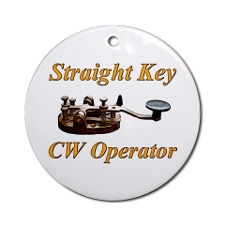
JUMP TEAM BOOT CAMP 2014 (April 4th-6th)
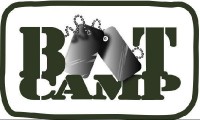 Another Section Of Our 200 Page
Another Section Of Our 200 Page
“Jump Team Boot Camp” Training Manual
AFTER SITE SURVEY: Assembling Your Tent Structures
by Bob W2IK
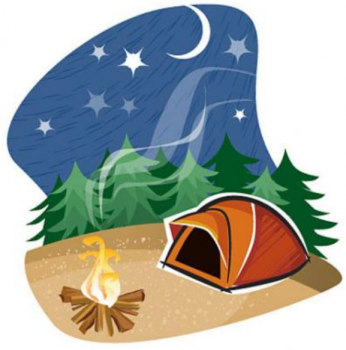 Setting up a tent can seem like a complex task especially for any first-time jump team member.
Setting up a tent can seem like a complex task especially for any first-time jump team member.
Tents are a vital piece of Em-Comm gear, for sure, but many frustrated jump team members have cursed their tent as they’ve tried to set it up in the dark or during inclement weather without proper preparation.
However, once you’ve set up a tent several times, it becomes a familiar routine that can easily be repeated even in the most difficult Em-Comm conditions, and once you’ve mastered setting up one kind of tent, it will then be easier to set up other kinds of tents, be they simple or complex.
Remember that your tents (structures) are just as important as setting up your communications gear. After all, you will be living and working in them for many days. Here are some basic steps that will help you set up your tent structures quickly and efficiently.
Practice setting up your tent before you go to your duty site to deploy. Setting up your camping tent at least a couple times, directions in hand, before twilight is a good idea as you’ll never know what time of day (or night) you’ll be doing it for real. While some camping tents have simple designs, like family tents, other tents have complex designs, like dome tents, which will not be easy to assemble when it’s dark and you’re involved with other jump team duties.

The Texas QSO Party occurs on the last full weekend in September. The 2013 dates are the 28th and 29th of September. Operating times are from 1400Z on SATURDAY to 0200Z on SUNDAY and from 1400Z to 2000Z on SUNDAY. (This break of times is to ensure safety of the mobile operators and keeps them from driving/setting up in the dark.) Operation on all bands except on 60 meters, 30 meters, 17 meters, and 12 meters is permitted. Stations may work the entire contest period. Be sure to submit your scores by October 31.
This is a great chance to work your fellow Texans and it’s fun, too! Just read the rules at: http://www.txqp.net/ and try to work as many stations in Texas as you can. BUT WAIT! You are in Texas, too, so try to work as many states and countries as you can. Just call: “CQ Texas QSO Party”. Each new state or country counts as a multiplier.
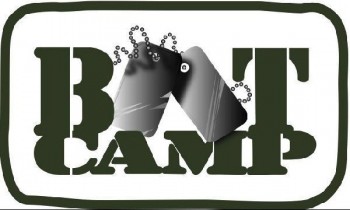 Another small portion of our 200 page “Jump Team Boot Camp” training manual – Next Class Is Scheduled for April 2014
Another small portion of our 200 page “Jump Team Boot Camp” training manual – Next Class Is Scheduled for April 2014
(Be sure to read earlier blogs concerning other aspects of emergency communications and the blog about the upcoming “Jump Team Boot Camp” , a 3 day “get down and dirty” training course.)
by Bob Hejl W2IK
In 1998, I was airlifted via National Guard helicopter to supply emergency communications out of a medium size town in upstate New York. The town had been cut off in every way from the outside world due to an ice storm. Talk about improvising! Talk about pressure! I was lucky enough to find some very helpful people who went out of their way to make sure my communications deployment was successful.
We took turns siphoning fuel from trucks so the two generators could be kept running to supply lights, power to run the boiler system for heat and radio power at the local school which acted as a shelter and gathering place where news could be disseminated. Many of the local homes had wood stoves or fireplaces for heat, but there were some that did not and although 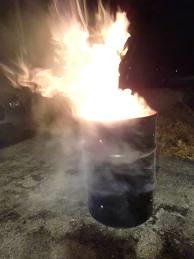 many who didn’t were invited into neighbor’s homes, about 100 opted to stay at the shelter.
many who didn’t were invited into neighbor’s homes, about 100 opted to stay at the shelter.
Since many people were hanging out in the area outside the school, I even suggested that if we had some empty 55 gallon drums we could get some heat from wood burning just like you’ve seen in depression movies. (outdoors, of course) A few minutes later several drums were there, in place, fueled with wood and lit. Neighbors who hadn’t seen or talked to each other in a while were standing around these lit barrels trading stories and getting caught up on “local news”. It made everyone feel as if it were one big winter block party! Everyone in the town contributed what they could to help their neighbors weather this event.
I kept in constant contact, via 40 meters, to the state capitol, giving them updates, requests and getting news and answers to questions. The ground was frozen solid so using stakes to erect an antenna was impossible. I had to lash my antenna’s center pole (using bungee cords) to a truck body while keeping the antenna ends secured with cement blocks. After almost a week, the roads were again open but through it all I improvised whenever there was a problem which needed a solution.
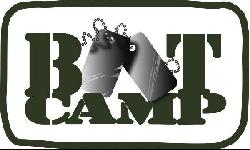 A small section from our 200 page “JUMP TEAM BOOT CAMP” training manual
A small section from our 200 page “JUMP TEAM BOOT CAMP” training manual
by Bob Hejl – W2IK
Your Em-Comm deployment group is only as good as the antennas they use. With this in mind, you must use antennas that are “tried and true” yet simple to erect in an emergency. They DO NOT have to be expensive. They should not be an elaborate concoction of wires or elements (NO BEAMS… You are NOT working DX as 99% of all HF emergency communications will be on the lower HF bands and probably not more than 300 miles).
There was only one case in over 20 years where I had to do emergency communications using 10 meters and this was communicating from New York to Hawaii (which had a hurricane) and relay the traffic back to California because due to propagation neither Hawaii or California could hear each other.
Your antennas DO have to work – every time and under a myriad of conditions such as freezing weather, monsoon-type rains, sustained winds or sizzling heat. They must also be stored and ONLY used for deployment purposes. They should not be something you scrounge together before heading out for a deployment. Back up antennas are vital. You need to have redundancy (two of each antenna so if there is a problem, such as a branch falls down on one that makes it un-repairable, or a failure such as a center connector breaking or burning out, it will not prevent you from getting on the air)
There is NO SUCH THING AS A “MIRACLE ANTENNA” no matter what you’ve read in ads or what a few hams “swear” by.
Emergency deployment is no game. If you need a question answered about a particular antenna, feel free to email me: alonestaryank@aol.com
EMERGENCY COMMUNICATIONS DEPLOYMENT FOR AN EVENT
LASTING SEVERAL DAYS:
“PROTEIN DEPRAVATION” AND “FOOD FATIGUE”
which follows our 200 page Jump Team Boot Camp training manual)
………….You must also provide nutritional food with plenty of protein.
Protein Depravation
The result of an unbalanced diet may cause “Protein Depravation” which may impair judgment, cause lack of energy, poor sleep, slurred speech and other symptoms. “Cults” use protein depravation to control their members as it becomes difficult to think or reason when your brain is deprived of protein. Sending the wrong “traffic” in a message may cause disaster or heart ache.
Junk food and “sweets” should be kept to a minimum, although some salty snacks should be allowed in moderation as they can help in matters of dehydration if you are deployed in the aftermath of a hurricane where it becomes hot and humid.
Some of the best sources of protein, beyond your food cache of canned meats, canned tuna and canned poultry (all of which you should bring), are servings of beans, such as lima beans, pinto beans and red beans. Beans and rice combination is inexpensive yet can be part of a well balanced meal. Beans are easy to store and prepare and their purchase price is very reasonable.
If you wish, you could store this type of food in the same way “long term food” peppers do. Take a supply of dry beans, pour them into a heavy Mylar bag, add an oxygen absorber and seal the bag by ironing it closed being sure to squeeze any excess air out of it. LABEL the Mylar bag with what’s inside and date it. If properly done, and if the sealed Mylar bag is also protected from punctures and rodents by storing them in plastic buckets, it should remain a viable food product for about 20 years.
 SITE SURVEY – An Important Detail For Longer-Term (over a day) Emergency Communications Deployment
SITE SURVEY – An Important Detail For Longer-Term (over a day) Emergency Communications Deployment
TAUGHT AS PART OF OUR “JUMP TEAM BOOT CAMP” session by Bob W2IK
How and where you erect any operating, sleeping and cooking structures is very important. This also includes areas for erecting any antennas. This is why when you get to a location and decide upon a general area, you first must do a site survey. This is especially true if your team does a full-scale tent deployment and not a deployment using existing free-standing buildings. One of the most important things to consider is: Will this emergency intensify, such as will there be additional rains or wind in the short-term future while you are deployed? Even if you do choose to use an existing building, you need to do site survey.
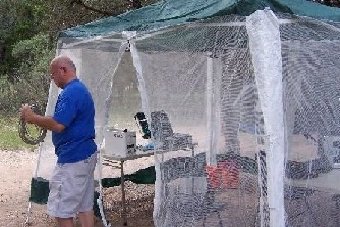 Threat Assessment –
Threat Assessment –
- Will there be drainage for additional rains or will your operation be flooded out or will you have to sleep in soaked sleeping bags like I had to do once in the 1980s in the Virgin Islands because the team leader decided on the wrong area for placement of the communications team?
- An existing building may become flooded or cut off from access or evacuation.
- A road to any building may become a river that will flood out any building when you least expect it.
- Always choose an area which is on higher ground than the surrounding plain and NOT near any stream or river or their associated flood plains. You can usually tell about where the flood plain is by observation. Along streams there will be what’s known as a “debris line”. On flat terrain, this could be hundreds of yards from the stream itself. This is the highest area that has been recently flooded. Stay FAR AWAY from any debris line, as the emergency you might be deploying for, will have greater flooding potential than the average heavy rain.
- Areas near a dry creek bed should be avoided because a dry creek bed can be flash-flooded and you along with it. I have seen one of these creek beds flood out to a half-mile wide river in a matter of minutes. High winds can cause trees to come crashing down when already saturated roots give way so keep away from large trees. Yes, they may make handsome places to string up an antenna, but at what cost? Read the rest of this entry »
Lighting For Emergency Communications
I use a dedicated 12 volt DC system to power as much as possible, such as my communications rigs, and also my lighting system.
12 Volts is versatile, as you can use a deep-cycle battery system charged by solar panels, wind generation or even a heavy DC power supply/charger driven by a gas AC generator. I also run a 12 volt system because you never have to “power down” like you need when you re-fill a gas generator. You can switch batteries very easily without interruption.
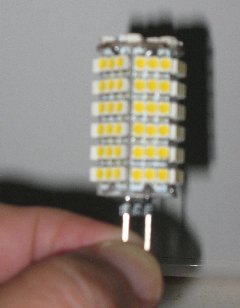 I have experimented with all types of 12 volt lighting methods and have come to the conclusion that a system using SMD (surface mounted light emitting diodes) gives you the most illumination per watt. Using other 12 volt lights, such as fluorescent systems, can have a high rate of failure. You don’t want your lighting to go out in the middle of emergency work.
I have experimented with all types of 12 volt lighting methods and have come to the conclusion that a system using SMD (surface mounted light emitting diodes) gives you the most illumination per watt. Using other 12 volt lights, such as fluorescent systems, can have a high rate of failure. You don’t want your lighting to go out in the middle of emergency work.
I have had these fluorescent lights “blow” after only about 10 hours and it’s usually the electronics package built into each lamp that burns out because it’s electronics has to convert 12 volts DC into high voltage in order to make the bulb fluoresce (ignite) and the imported lamps (usually made in China or Hong Kong) are made with sub-standard components.
Most SMD systems, even though they are imported as well, last as long as 50,000 hours and aren’t as fragile as either fluorescent bulbs or other glass lights. You drop a fluorescent blub on the floor and it breaks in to a hundred shards of glass with dangerous chemicals on them…. you drop an SMD light on the floor and all you have to do is pick it up.
